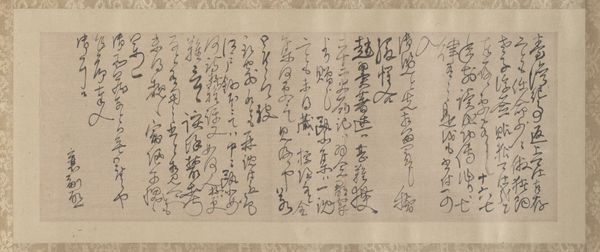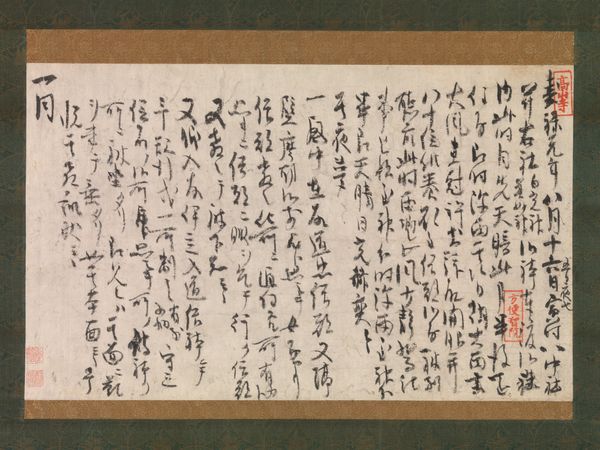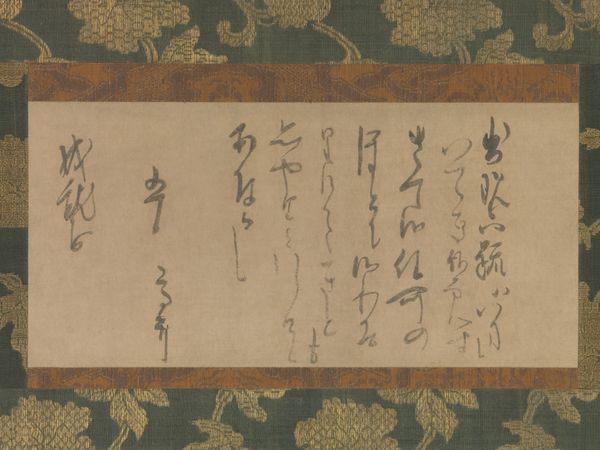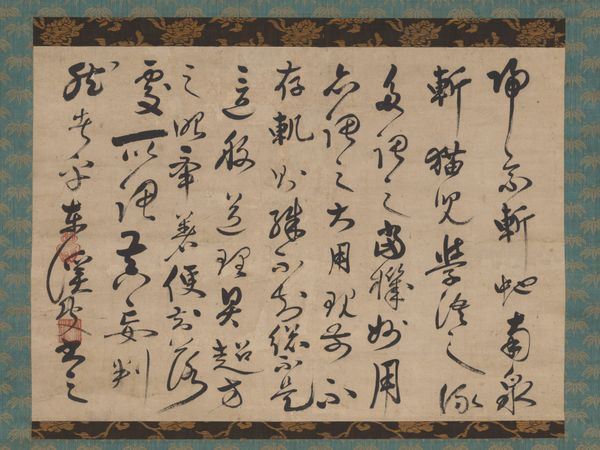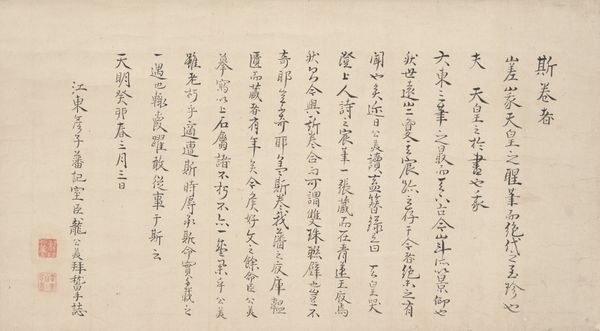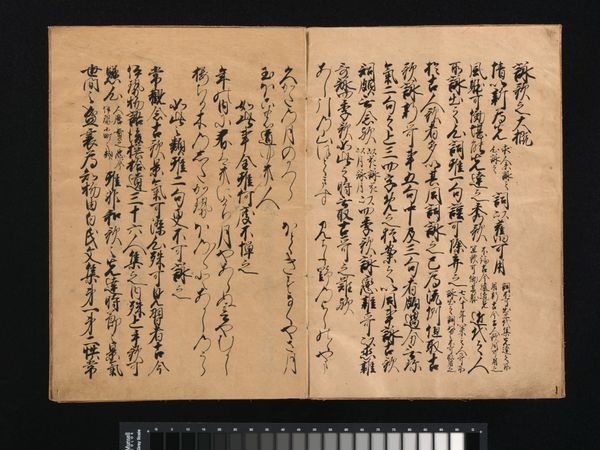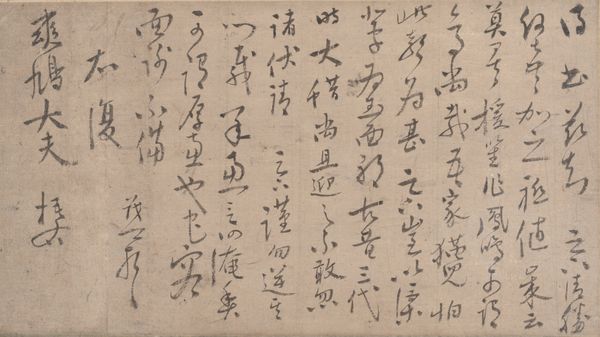
drawing, paper, ink
#
drawing
#
asian-art
#
paper
#
ink
#
calligraphy
Dimensions: Image: 8 3/8 × 10 1/4 in. (21.2 × 26 cm) Overall with mounting: 38 9/16 × 16 9/16 in. (98 × 42 cm)
Copyright: Public Domain
Curator: This artwork is "Letter to Shunkin" made between 1767 and 1820 by Urakami Gyokudō. It’s a drawing using ink on paper and strikes me as a highly personal piece. The calligraphic style gives it a unique visual texture. What strikes you most about this work? Editor: I'm drawn to the dense, swirling character of the brushstrokes, it makes the text hard to discern, but there's a lot of expressive energy there! I guess what I’m wondering is, how would something like this have been received by the public back then? Curator: That’s a perceptive question. Consider that the Edo period in Japan, while a time of relative peace, was also tightly controlled. Calligraphy, like this piece, served various social functions, including conveying messages but also signaling status and cultural refinement. We must ask ourselves: how accessible was this kind of personal expression, and for whom? Did this kind of lettering give someone access or block it? What could commoners infer from this skill? Editor: So, reading between the lines – literally! Was the artist possibly using artistic style to express something subtly subversive? Curator: Potentially. Elite art forms like calligraphy and landscape painting allowed artists to convey ideas and feelings that may have skirted official censure, making aesthetic choices become carriers of social commentary. If someone saw and felt they had to try and measure their abilities, could the same skill get you a higher status? And who were the audience for private letters like this anyway? It offers an interesting glimpse into the politics of artistry in the Edo period, doesn't it? Editor: Definitely gives me a whole new perspective on what calligraphy can communicate. Curator: Precisely. It's a reminder that art isn't created in a vacuum but is deeply embedded in social and political structures.
Comments
No comments
Be the first to comment and join the conversation on the ultimate creative platform.
